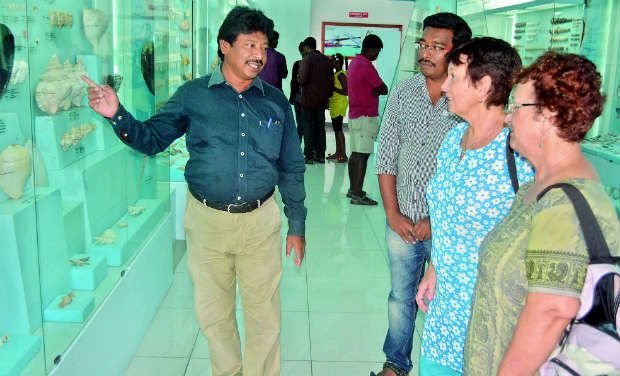
Mahabalipuram:
For the first time in the country, an exclusive museum has been set up in the coastal town of Mahabalipuram to conserve and document marine life, particularly seashells and their biodiversity.
The museum is a now home to about 40,000 types of shells collected over a period of 33 years from different seabeds of Indonesia, Philippines, Australia and Japan. The rib cages of whales and teeth fossils of sharks have also been preserved in the museum which is now a hit with foreigners.
“Since my childhood, I have been collecting shells as a passion. It all started from the coastal waters of Cuddalore and then extended to the shallow waters of Kasimedu and Rameswaram coast,” says a beaming Raja Mohammad, founder of India Seashell Museum.
“There have been days when I had to cough up my day’s food expense to buy a shell or a marine fossil that cost several lakhs. The museum is now open to the public at a nominal charge and we have approached former president A.P.J. Abdul Kalam, seeking his expertise on converting the museum into an interpretation centre for children and a place for studies on seashells and marine organisms. He has responded positively and will soon visit the centre.”
“The shell museum is a dream come true and I want to convert the centre into a resource place for those who want to explore marine shells and their anatomy and biology. This is the biggest museum in south Asia for shells and the process of collecting more specimens is under way,” says Mohammad who is a school dropout and depends on marine biologists for technically supplementing his museum.
“The collections are amazing. I never thought that seashells were so rich in colour. It is a beautiful experience to gaze at the specimens collected from the seabed,” says foreign tourist Anne Hallam from the UK.
“The museum with expensive pearl varieties and rare exhibits from different parts of the world is highly informative,” says another foreign tourist, Meryl Prothero.
source: http://www.deccanchronicle.com / Deccan Chronicle / Home> News> Current Affairs / DC / by C.S. Koteswaran / October 28th, 2013